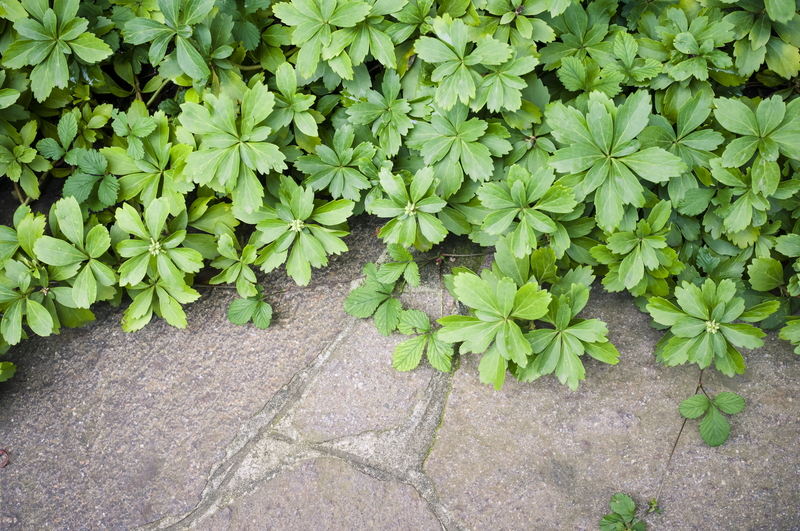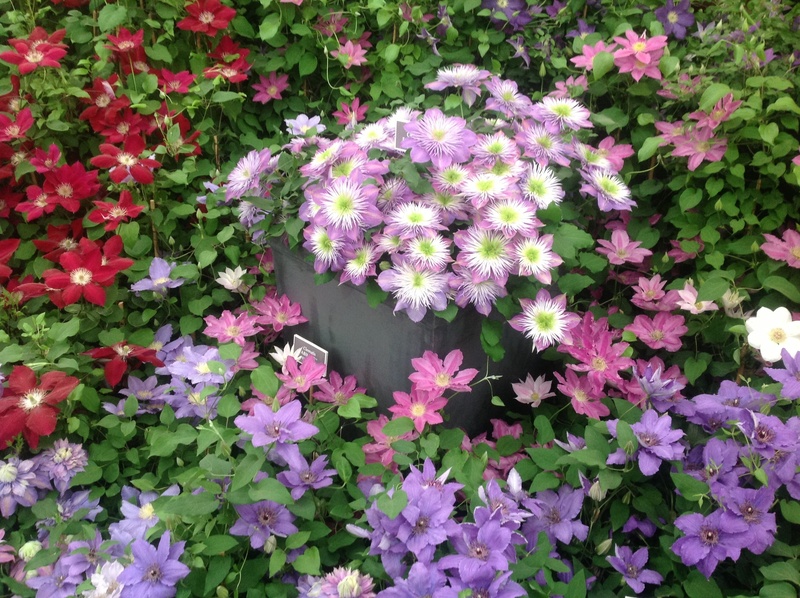How Green Thumbs Can Mitigate Climate Change Effects
Posted on 09/09/2025
How Green Thumbs Can Mitigate Climate Change Effects
In recent years, the impact of climate change has become impossible to ignore. From intensified weather events to shifting seasons and threats to food security, our world is changing fast. But amid the urgency, there's hope: individuals and communities can make a substantial difference--especially those with a passion for plants. Whether you're an avid gardener, a tree lover, or just starting to develop your 'green thumb', your actions can play a key role in mitigating climate change effects.
Understanding the Role of Green Thumbs in Climate Change Mitigation
Simply put, a 'green thumb' refers to people who are skilled at gardening and nurturing plants. But beyond their homes and gardens, these individuals--through conscious choices and innovative techniques--can contribute directly to fighting global warming. How? By harnessing the natural powers of plants and soil to absorb carbon, reduce energy use, restore biodiversity, and build resilient ecosystems.
- Plant cultivation absorbs CO2 from the atmosphere.
- Soil care increases its carbon storage ability.
- Biodiverse gardens support pollinators and local wildlife.
- Sustainable gardening reduces pollution and resource waste.

The Science Behind Plants and Climate Change
The relationship between plants and climate is fundamental. Plants, through photosynthesis, absorb carbon dioxide--one of the main greenhouse gases causing global warming. Healthy vegetation stores this carbon in both foliage and soil, acting as a natural carbon sink.
Carbon Sequestration in Gardens
By expanding green spaces--whether in backyards, balconies, or urban parks--gardeners help sequester atmospheric carbon dioxide. Tree planting and developing perennial gardens are particularly effective, as woody plants and deep-rooted species store more carbon over time.
Soil Health and Climate Mitigation
Rich, living soil is a powerful tool in the fight against climate change. Sustainable gardening practices, such as composting and mulching, increase soil organic matter, helping the earth retain more carbon and reducing the need for chemical inputs that can contribute to emissions.
Ways Gardeners Can Mitigate the Effects of Climate Change
Every gardener--regardless of experience level--can adopt practices to help alleviate the impacts of global warming. Below, explore actionable steps that empower your green thumb to make a lasting difference.
1. Plant Trees and Perennials
Trees are one of the most effective natural tools for climate mitigation. By absorbing carbon dioxide, providing shade, and reducing soil erosion, they support both local ecosystems and the global climate. When you plant a tree or even a long-lived shrub, you are making a decades-long investment in carbon storage.
- Choose native species for maximum resilience and benefits to local biodiversity.
- Participate in community tree-planting initiatives to expand your impact.
- Consider food-bearing trees to address both climate and food security.
2. Foster Healthy, Living Soils
Soil isn't just 'dirt'--it's a dynamic ecosystem crucial to the carbon cycle. Here's how you can improve soil health:
- Practice no-dig gardening to preserve soil structure and carbon stores.
- Compost kitchen and garden waste to enrich soil organically.
- Mulch beds to retain moisture and add nutrients over time.
- Minimize synthetic fertilizers and pesticides, which can contribute to greenhouse gas emissions.
3. Increase Biodiversity in Your Garden
Monocultures--a single type of plant grown over a large area--are highly susceptible to pests, diseases, and climate shifts. Diverse gardens, by contrast, are more adaptable and beneficial for pollinators.
- Plant a variety of species, including flowers, herbs, and vegetables.
- Provide habitat for pollinators with flowering plants across all seasons.
- Reintroduce native and endangered species into your landscape.
4. Support Water Conservation Techniques
Climate change brings unpredictable rainfall, so conserving water is essential.
- Install rain barrels and soak your garden with harvested rainwater.
- Opt for drought-resistant plant species suited to your climate.
- Apply mulch to reduce evaporation and keep roots cool.
5. Use Sustainable Gardening Tools and Materials
Traditional gardening tools often have a carbon footprint. Choose eco-friendly options:
- Utilize hand tools instead of gas-powered equipment where possible.
- Buy local and recycled materials to reduce emissions from transportation and production.
- Avoid single-use plastics and seek biodegradable pots and markers.
Urban Green Thumbs: Gardening for Climate Resilience in Cities
Urban areas are particularly vulnerable to the effects of climate change--heat islands, air pollution, and flooding are all exacerbated by concrete and lack of vegetation. City gardeners can help transform urban environments into climate-resilient spaces.
Creating Green Roofs and Vertical Gardens
Green roofs absorb rainfall, reduce cooling costs, and filter air pollutants. By establishing rooftop or vertical gardens, you not only beautify your space but also provide essential environmental services.
- Plant hardy succulents and grasses that thrive in rooftop conditions.
- Use vertical planters to maximize limited space.
Community Gardens: Shared Climate Action
Urban community gardens promote sustainable food production, bring neighbors together, and offer education on climate-friendly practices. They increase local green space and teach valuable resilience skills.
- Join or start a community garden in your area.
- Share seeds, plants, and knowledge to foster communal growth.
Climate-Smart Gardening: Adaptation Strategies
Not only must we work to reduce our environmental impact (mitigation), but we also need to make our gardens more resilient to the effects of climate change (adaptation). This ensures that our green spaces will continue to thrive, even in the face of shifting weather patterns and increased climate risks.
Choose Climate-Resilient Plants
As local temperatures and rainfall patterns shift, some plants may struggle to adapt. Integrate climate-resilient species into your garden based on current forecasts and changing conditions.
- Select drought-tolerant and heat-resistant plants for exposed or arid zones.
- Utilize shade trees strategically to cool sensitive species.
Practice Integrated Pest Management
As pests and diseases shift with the climate, avoid chemical responses that harm the environment. Prioritize natural pest control methods such as encouraging beneficial insects, crop rotation, and biological controls.
Build Rain Gardens and Bioswales
Increased rainfall intensity can overwhelm urban drainage systems. Rain gardens and bioswales are beautiful, plant-filled depressions that capture runoff, filter pollutants, and provide habitat while reducing local flooding.
The Bigger Picture: Policy, Education, and Community Action
While individual actions are vital, large-scale change is best achieved through education, policy support, and collective action. Green thumbs can amplify their impact by:
- Participating in citizen science projects that track plant health and climate data.
- Advocating for sustainable landscaping policies at the local level.
- Leading or joining garden clubs to share best practices.
- Teaching children about the importance of plants and soil in climate stability.
Success Stories: Green Thumbs Making a Global Impact
Across the world, passionate gardeners and urban farmers are already making measurable contributions to climate mitigation. Consider these inspiring examples:
The Million Tree Initiatives
From New York to Nairobi, cities have launched tree-planting campaigns that not only capture carbon but also lower urban temperatures and improve air quality.
Regenerative Agriculture Movements
Farmers and gardeners alike are adopting regenerative techniques--emphasizing cover crops, no-till methods, and composting--to lock away atmospheric carbon and enhance soil life.
Urban Permaculture Projects
Neighborhoods transform vacant lots into edible forests and pollinator havens, demonstrating that even the smallest plots can support both people and the planet.
Troubleshooting Common Gardening Challenges in a Changing Climate
Even the most experienced green thumbs encounter obstacles, especially as conditions become more unpredictable:
Drought and Water Stress
- Mulch regularly to conserve water.
- Irregular deep watering instead of frequent shallow watering.
- Harvest greywater where permitted for non-edible beds.
Extreme Heat
- Install shade cloths during heatwaves.
- Move potted plants to cooler spots as needed.
Flooding and Heavy Rains
- Create raised beds for crops sensitive to wet roots.
- Build swales to divert excess water.
The Long-Term Benefits of Gardening for Climate Mitigation
The rewards of climate-focused gardening extend far beyond carbon storage. Gardeners enjoy:
- Better air and water quality.
- Cooling effects in urban heat islands.
- Healthier diets and food security through local food production.
- Strong, connected communities resilient to environmental challenges.
- Greater mental and physical wellbeing.

Getting Started: How to Grow Your Own Climate-Friendly Garden
Ready to harness your green thumb for the planet? Here's a step-by-step guide:
- Evaluate your space: Large or small, indoors or outdoors--every bit counts.
- Research native, resilient plants: Consult local extension offices or native plant societies for the best species.
- Start composting: Kitchen scraps and yard waste can become rich fertilizer.
- Mulch and minimize tillage: Protect soil carbon and encourage biodiversity.
- Share your journey: Inspire others by documenting your garden's climate impact.
Conclusion: Every Green Thumb Counts in the Fight Against Climate Change
The effects of climate change can feel daunting--but gardeners have both the power and the knowledge to be part of the solution. By applying the principles of carbon sequestration, soil health, water conservation, and biodiversity, every green thumb makes a positive impact. So dig in: plant a tree, build a compost pile, start a pollinator garden, and encourage your neighbors to join. Together, through millions of small actions, we can grow a greener, more resilient world.
Start today, and let your garden be a force for climate change mitigation!
```
